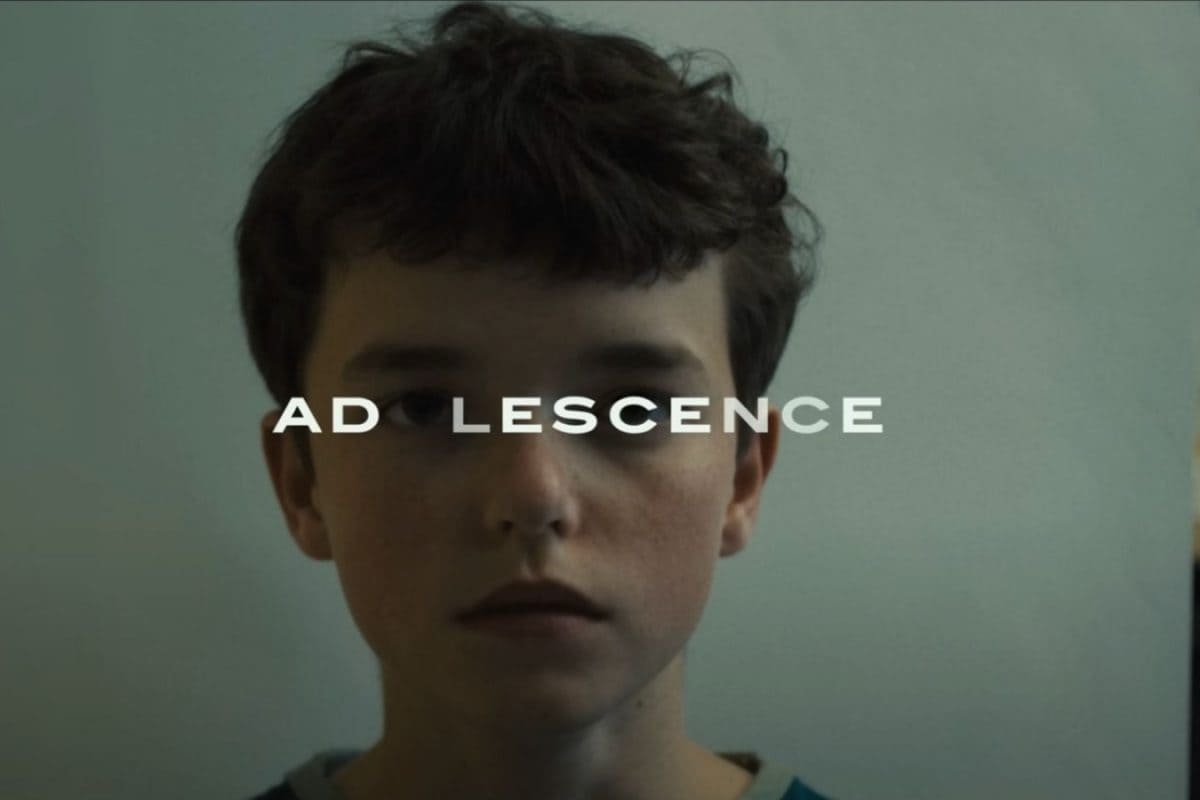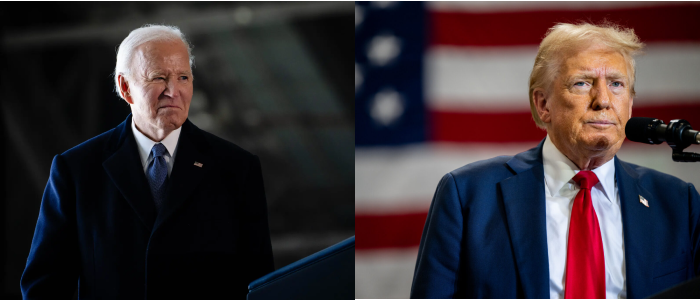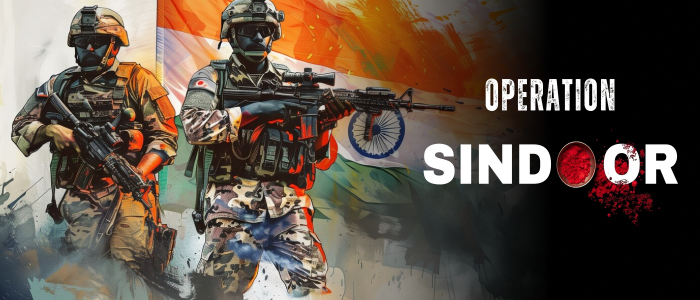Most of the commentary about ‘Adolescence’ has been about the dangers of teen radicalisation from the ‘manosphere’ śrūyatām dharmasarvasvam śrutvā caivāvadhāryatām ātmānaḥ pratikūlāni pareṣām na samācaret| (The essence of Dharma and Shastras is this; never do a thing to others that you do not wish to undergo yourself) The Netflix mini-series Adolescence is making waves. As media educators and creators, we cannot help wonder though if these waves are of the sort that will bring about positive social change in society over issues like “toxic masculinity", technology, and “incel culture", or are mostly of a solipsistic, self-serving, and stupor-inducing nature. This is not a criticism necessarily of anyone who has watched the show and is left feeling blown away by its depiction of what happens in the life of a young British boy and his family in the aftermath of a shocking act of violence.
Nor does it diminish concerns about the issues raised in the series. But the real question remains: what, in this wave of commentary (and hype) around this show, is actually helpful to our understanding of things, and our desire, presumably, to do something about such things? Is the show worthy of broadening the conversation on teens, technology and violence, or is it merely replicating a cliched and hurtful stereotype about boys somehow having to be rescued from their innately dangerous masculinity (as an Indian ad-maker’s video some years ago crudely showing small Indian boys pleading that they don’t want to become “rapists" did)? Most of the commentary about Adolescence has been about the dangers of teen radicalisation from the “manosphere", a fear that parents don’t really know what their teen sons are up to while sitting alone in their rooms with their computers and phones. Spiritual teacher Sadhguru though raised pertinent wider concerns in response to a question about the show recently.

He drew attention to the alarming rate of student suicides in India and pointed out that each passing generation is growing up with less engagement with family members and more exposure to distant commercial forces mediated by technology. But much of the discourse around the show, for better or worse, has been predictably political. UK Prime Minister Keir Starmer spoke of how hard it was to watch the show as a father of two children, a boy and a girl.
He welcomed a move to screen the show in schools and applauded the filmmakers. Meanwhile, critics of the show, including former Prime Minister Boris Johnson, mocked its premise. One criticism was the casting choices involved.
Why was the murderer portrayed as a white boy, they asked, when some of the real-life teen murders in the UK happened to have been done by non-white teens? If misogyny was the concern of choice for fans of the show, race (or “reverse-racism") possibly was the issue for others. It is not surprising, perhaps, that Adolescence provoked the same polarised responses as many issues involving identity and crime now do. But the real challenge at this time, in my view, lies in being able to navigate beyond the social media silos of our time and noticing something more than what our own refracted, over-editorialised feeds show us.
It is about being able to see what is actually happening to us, without the filters of categories invented by politicians and lobbies. This is not easy. After all, there is a lot more chatter out there today about a TV show that has seized eyeballs than there is, quite frankly, about a terrible act of physical violence that took place in the UK recently involving two teenagers, their octogenarian victim, and of course, phones.
Last September, a boy (then 14) and a girl (then 12) attacked an 80-year-old man of Indian descent named Bhim Kohli in a park near his home in Leicestershire. The boy did not even seem to consider what might happen to an elderly man if he was shoved to the ground and struck with a boot across the face. The girl, seemingly, enjoyed the whole thing as an opportunity to make a video for social media about it (the prosecution argued that she had a history of making videos of attacks and fights, and that she could be heard laughing while the brutal beating was happening).
The slur that was used against the victim was not published, but it seems to have been a common racist one used in England against people of South Asian descent. “The brutal killing of an elderly man, carried out by a racially-abusive 14-year-old boy with a thirst for social media notoriety..
." (emphasis added), is how the BBC News described the case. The two teens have been convicted of manslaughter, and reports on the case could not help but make references to Adolescence.
At the same time, quite tellingly, most articles about the show don’t seem to have even realised that an actual, real-life incident involving teens and social media (and in the same country the show takes place, at that) also deserves our attention. For example, writing in The Guardian about the show, Katrina vanden Heuvel (of the Council for Foreign Relations and The Nation), mentions the real-life example of a 26-year-old man in England who stabbed his ex-girlfriend and her sister to death, having binge-watched videos of the notorious influencer Andrew Tate. It is not hard to see the convergence in the discourse on presumed causes, and more worryingly (considering that there is no denying the toxicity of some of these online celebrity figures), the exclusion of things which really need our attention at this time.
Two British teens attacking an elderly Indian man presumably for social media clout is simply not as much of a bother, perhaps as another case where the “manosphere" is more directly to blame. Among the torrent of headlines about Adolescence is a report which proclaims that the show has surpassed even Dahmer to become Netflix’s “third most-watched show" ever. This once again raises an obvious question about the hype around this show, which commentators like Heuvel seem to think has “organically" spawned “delicate, patient, thoughtful, conversations".
Should people really be getting so mystically self-congratulatory about a media behemoth’s story about teen radicalisation into violence when it has also been putting out (equally deftly produced) content sanitising or glorifying violence? Frankly speaking, is it foolishness, spiritual impoverishment, or sheer opportunism when politicians seize on the equivalent of a lollipop for the conscience waved about by a corporate media giant, which is leaping gleefully from one profitable ode to another about killers like Dahmer and the Menendez brothers? Adolescence is perhaps better understood not as some angelic intervention into the indifferent stupor of fathers and mothers who haven’t done enough to rid their male offspring of some original sin, but as another landmark in the descent of critique into controlled opposition. It reminded me somewhat of another movie we watched on Netflix a few years ago – the documentary The Social Dilemma. Here, we watched a serious social concern about social media and teens unfold before us, not in the fullness and honesty of everything that could be said, but simply as a drama where a group of conscientious dissenters are ready to save us from corporate greed and political enemies.
What was left unsaid in that show was obvious, because it is what is left unsaid in almost any spectacle of social concern along approved channels today. Those who purport to purvey “critique" have been largely co-opted. Many of us working in media or media education today were educated in an approach which called itself critical cultural studies.
It was supposed to be a badge of pride, “speaking truth to power," and things like that. And it wasn’t just empty pride. In the 1990s and even into the early 2000s, our classes resonated with a specific kind of excitement which involved curiosity, discovery, and what we might call heroic humility.
There is a way you feel when you learn, because what you might learn is not just about something out there, like how a media researcher’s work revealed bias and distortion, which a casual consumer of media would have never noticed, but also about something in us. We learn most perhaps when we keep realising that we had something more to learn, still, that we really didn’t know, or didn’t see something. But in recent years, it appears increasingly that there is nothing left to learn because everyone you know or read in college, schools, and of course, the media has agreed on what the problems are, and what the solutions are – and anyone who tries to broaden this arrangement is deemed not just wrong, but evil.
The truth is that sometimes the blame probably does deserve to be talked about in terms of hegemonic masculinity or white supremacy or populism or whatever, but sometimes there needs to be more than just cliches and corporate propaganda to restore what is left of our desire to learn and to live nicely with others again. On that note, it was both promising and daunting to see the need for “Media Literacy" being invoked in the light of the social media concerns raised by Adolescence. Heuvel, for example, quotes a survey which says that 94% of teenagers want more media literacy to be taught in schools to safeguard them from social media and applauds one such initiative in her article.
As people who care about media’s influence on future generations, we would love to see that because media is an inescapable part of who we are today and how we live (and take lives away, sadly). But then, even a cursory look at some of the content being advanced by leading media literacy projects to children tells us that all is not well, or at least honest, here too. What we find being promoted is not a whole-ranging education in understanding what media are, how they run, who owns them, and how to question their claims, but a plethora of “tool-kits" which at best teach children how to tell spam and real news articles apart – but not how to question anything in these articles themselves.
The “establishment" or “legacy media" (as the “populists" refer to them) are no longer available for questioning. You just need to know that if it’s not in the New York Times or The Guardian, it may well be “disinformation" or “fake news". But you no longer need to know, apparently, that just because it’s in the Times or Guardian, it could still be critically examined for what it leaves out too.
The real challenge of our times, as far as media criticism and the possibility of real change goes, is that we need to recognise that our supposed critiques, dissent, call for change, everything has also been boxed in. We need a much deeper and serious engagement with this phenomenon called “media" than what the overhyped “disinformation" training programmes have been claiming to do. We need humility, if not a sense of wonder and awe, in recognising how much recent developments in media technology, technique and content have colonised us.
By drawing us out of our own real-world spaces of intimacy, interpersonal interaction, and most vitally, even our sanctuaries of sensorial silence, our unputdownable friend, the smartphone, and our unforgettable yes-man, our social media feed, have plunged us into increasingly limited and limiting spaces of thought, information, and action. We can’t give up hope, though, that families, teachers, classrooms, and of course, “legacy media" too, can still help change things for the better. But for that, we need to put truth over tribes, and lives over labels.
paropakāraḥ puṇyāya pāpāya parapīḍanam| (Helping others is virtue, harassing others is vice.) Vamsee Juluri is Professor of Media Studies, University of San Francisco. He has authored several books, including ‘Rearming Hinduism: Nature, Hinduphobia and the Return of Indian Intelligence’ (Westland, 2015).
C Raghothama Rao is a writer, podcaster and YouTuber. The views expressed in the above piece are personal and solely those of the authors. They do not necessarily reflect News18’s views.
.
Politics

Opinion | Netflix’s ‘Adolescence’ is Making News, But Who Will Speak For Real-Life Teen Violence Victim Bhim Kohli?

Most of the commentary about ‘Adolescence’ has been about the dangers of teen radicalisation from the ‘manosphere’















